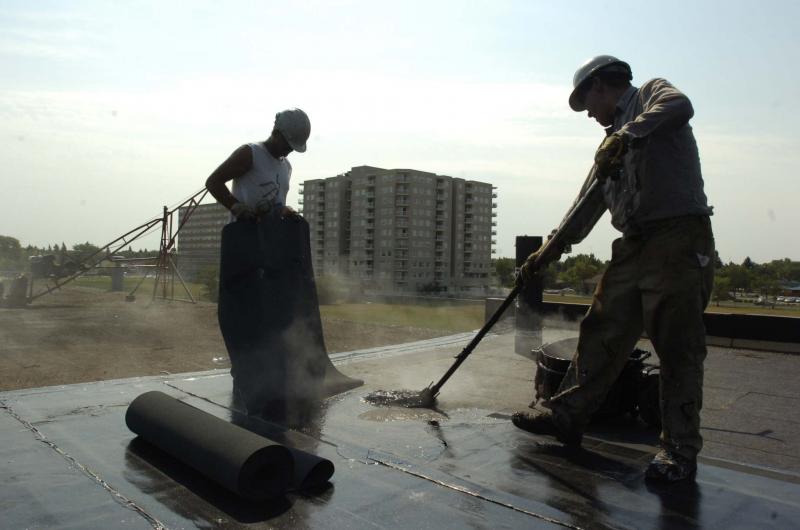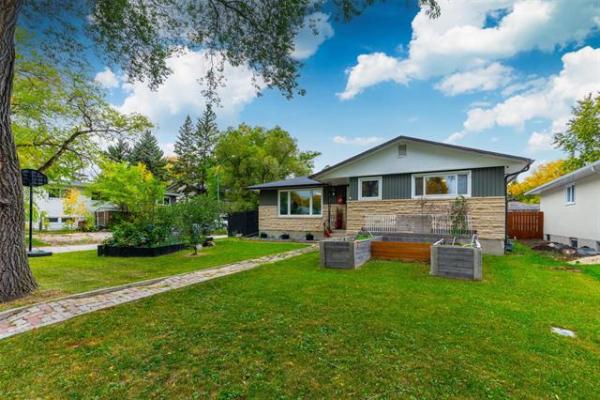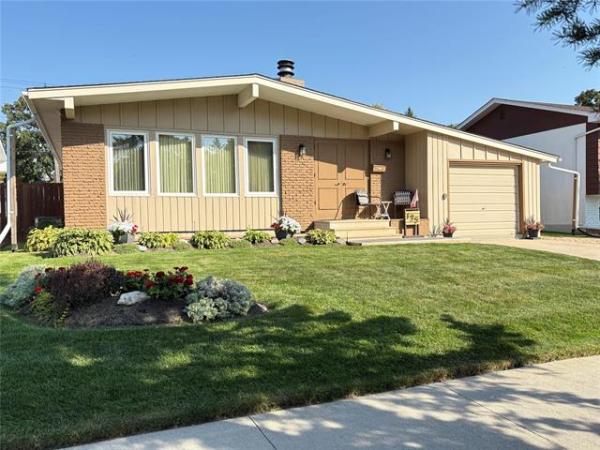Question: We own a home that was built in 1964. We love many aspects of the home, especially its unique design. It has a 2/12 pitch roof that has the original tar-and-gravel material. We feel like the time has come to review our options to have the roof redone. Is there a new product that could insulate as well as act as a new roof? We don’t have attic access, so using traditional insulation is not an option. Looking forward to hearing from you. Bev Loewen
Answer: There are often new building products that come onto the market that have limited value, especially in our cold northern climate. While the roofing material best suited for your home has been around for many years, insulation upgrades done at the time of re-roofing are newer and have been quite successful in reducing moisture issues in vaulted roof systems.
Homes with low-slope roofs built around the time of yours often have issues with condensation and moisture intrusion, or leakage due to roofing that has exceeded its life expectancy.
Built-up roofing systems, commonly called tar and gravel, are very high-quality products that have been used successfully for many decades on low-slope and flat roofs. Unfortunately, these systems are extremely labour intensive as they require multiple layers of roofing felts and hot tar to be applied. Once this membrane is sufficient in thickness, the top layer is typically covered with a layer of small, round stones. This stone layer prevents damage to the roofing from mechanical forces, while protecting the bitumen layers from harmful UV light from the sun. Because of the difficult and time-consuming installation process, other more modern roofing systems have been developed.
The most commonly used of the newer low-slope roofing systems, is often referred to as a single-ply membrane.
While this name is somewhat misleading, it does differentiate between the multiple layers of the tar and gravel roof. Single-ply roofing is normally a rubberized membrane with a bitumen-based underside and coloured granules on the top surface that is partially overlapped. The granules look similar to those in common asphalt shingles and protect the layers underneath from the sun and physical wear. These membranes may be attached to the roof deck by melting with a large propane torch, or many are self-adhered by peeling off a protective layer and directly applying to the roof sheathing. While the torching method is still somewhat labour intensive, and dangerous, the self-adhesive membranes can save time and money. That is why they may now be the most commonly materials used for these style of roofs in our area.
There are other single-ply roofing materials available, but for residential use, the granule-covered membranes are the standard due to their ease of application and appearance.
The key to improving your entire roof system, and preventing moisture intrusion and damage that you may have already experienced, is what is done under the roof surface. The old built-up roofing system will have to be removed before new roofing materials are applied. It can be quite difficult to physically shovel the various layers off the old roof sheathing without damaging it. So, it is often simpler to remove any loose stones and simply pry up and discard the old plywood rather than trying to scrape it clean enough to apply new roofing materials. If that method is used, it also allows for a few more advantages to be gained.
Once the loose rock layer has been removed and discarded and the sheathing pried off the roof/ceiling joists, the inside of the roof system can be inspected. This will help determine if the insulation is deteriorated, or if moisture damage has occurred under the roof surface. If there is significant rot seen in the framing, damaged areas can be cut out and replaced. Also, this is the time to improve the entire system with more modern insulation. Blowing in high-density polyurethane foam, or equivalent, will help to completely seal this area from warm air intrusion from the building below. If the complete cavity between the joists is filled with insulation that is highly resistant to air and moisture, condensation will be only a distant memory. Also, this material has high thermal resistance, so heating bills should be lower than with older fibreglass batt insulation. The only downside to this method is the additional cost for roof-sheathing installation. Fortunately, replacing the sheathing will also allow for excellent adhesion of the new roofing membrane.
There are some newer systems that do install blown-foam insulation above the sheathing, but these are rarely used residentially. They also need to have some form of membrane or paint on the surface to prevent UV damage. You may want to research these further, but they are not yet in wide use in our area, so I have little experience with their durability and long-term performance.
Using an untested new product for a tricky roofing system, like that in your home, may be possible but risky. Replacing your old built-up roofing with a modern, but well-tested, single-ply membrane will also allow for improvements to the insulation and air sealing of the area at the same time.
Ari Marantz is the owner of Trained Eye Home Inspection Ltd. and the past president of the Canadian Association of Home & Property Inspectors — Manitoba (cahpi.mb.ca). Questions can be emailed to the address below. Ari can be reached at 204-291-5358 or check out his website at trainedeye.ca.
trainedeye@iname.com




